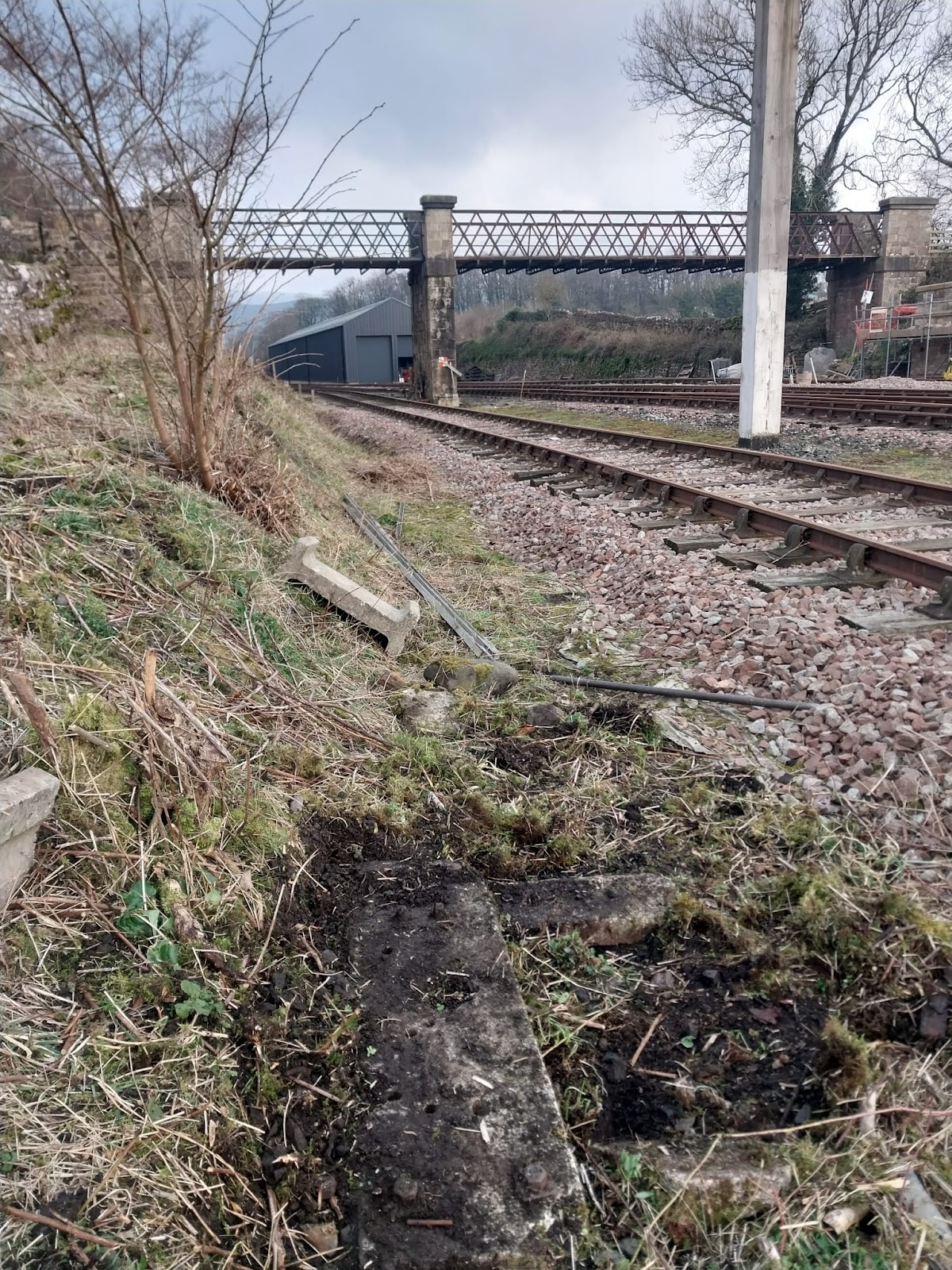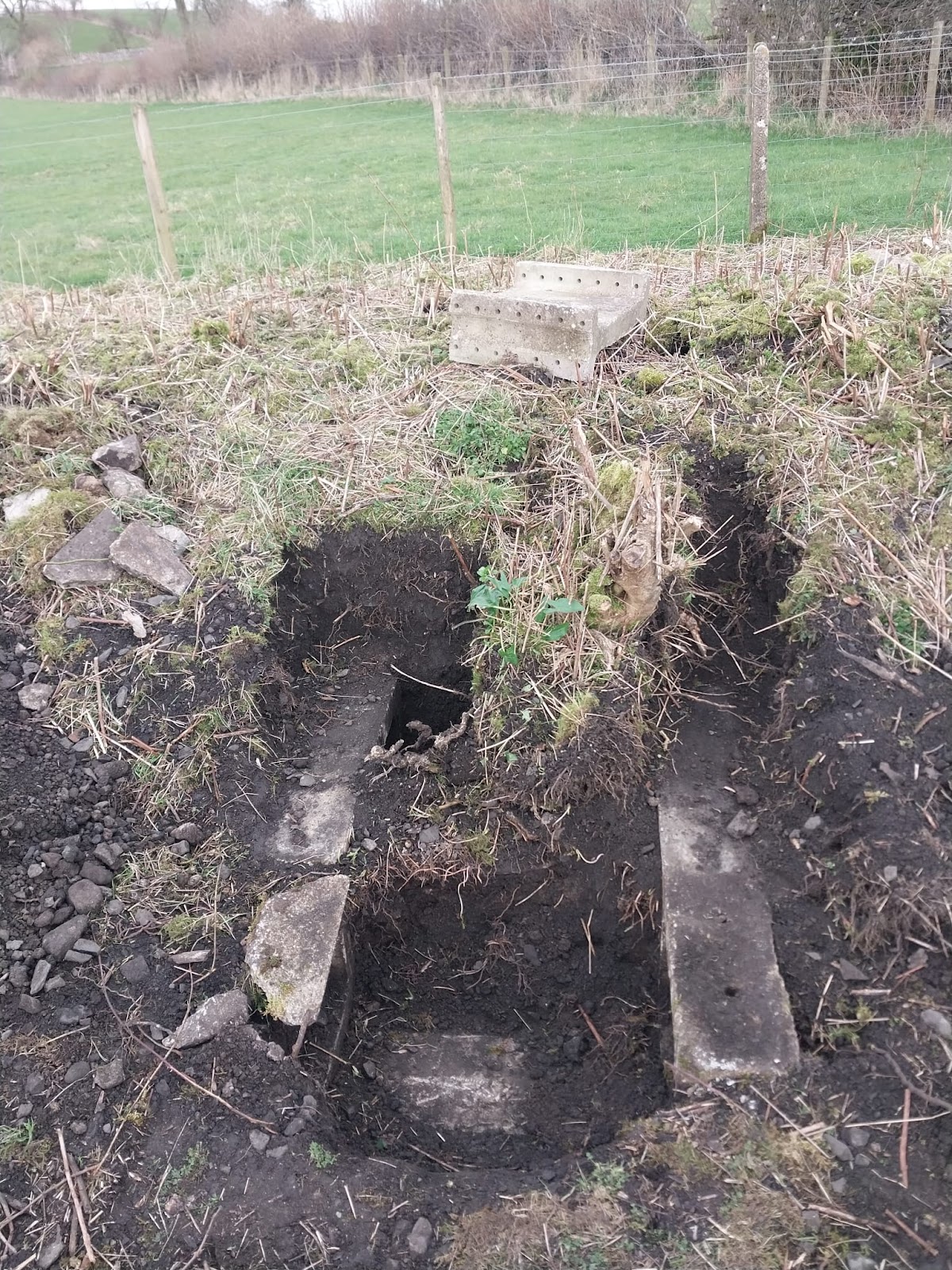Having previously discussed the placing of stools in the ground (to support point rodding, I hasten to add), we now move on to benches. These have legs in the ground and wooden tops... for the cranks and compensators to sit on. By the very nature of the forces involved, these are heavy lumps that need to be well planted so that they don't move. If we have loose benches, we will have points not moving far enough, and lots of wasted effort from those working the signal box.
 |
| The bench in its native habitat: snoozing in the ground |
On site at Kirkby Stephen East, we have been lucky to find several LNER / BR concrete bench legs, with concrete tops and concrete ties between the legs. These are steadily being recovered for further use, which sounds lovely and simple. Until you come to dig them out! I will now try to recount some of the challenges we face with this task...
Upon exposing the top, the original bolts which hold the separate concrete slabs together can either be undone (if you are incredibly, incredibly lucky) or cut through with an angle grinder. We will not be using pre-cast concrete tops as they are very unforgiving and do not allow for minor errors in terms of placement. With wood, you can shuffle the cranks around until they are in the right spot before drilling and bolting them down!
 |
| Top removed, legs now visible after some excavation |
Once the top has been removed (1 heavy lump gone!), the legs themselves need digging out enough to get at the bolts holding the bottom slab which ties the two legs together for stability and strength. And weight, but we'll get to that... These bolts will not come undone after years buried underground, unless there's a miracle. Getting an angle grinder in, to cut them off, is not straightforward either!
It's now time to lift out a leg. Or it would be, if there was only one tie between them at the bottom. At this point you usually find a second one by trying to lift the leg and finding you can budge it because it is so heavy. So you have to dig more out from around the legs and cut through the second set of bolts. Assuming you have enough left of your slitting disc to cut deep enough, and the batteries have enough charge... Usually a disc change is required, and a walk back to get another battery off the charger...
 |
| Will demonstrating his strength! |
Once the components have all been dug out, it's time to assess how suitable they are for reuse, shift them to where they need to be and tidy up the mess you've made by digging them all up!
 |
| A kit of parts for inspection |







Comments
Post a Comment